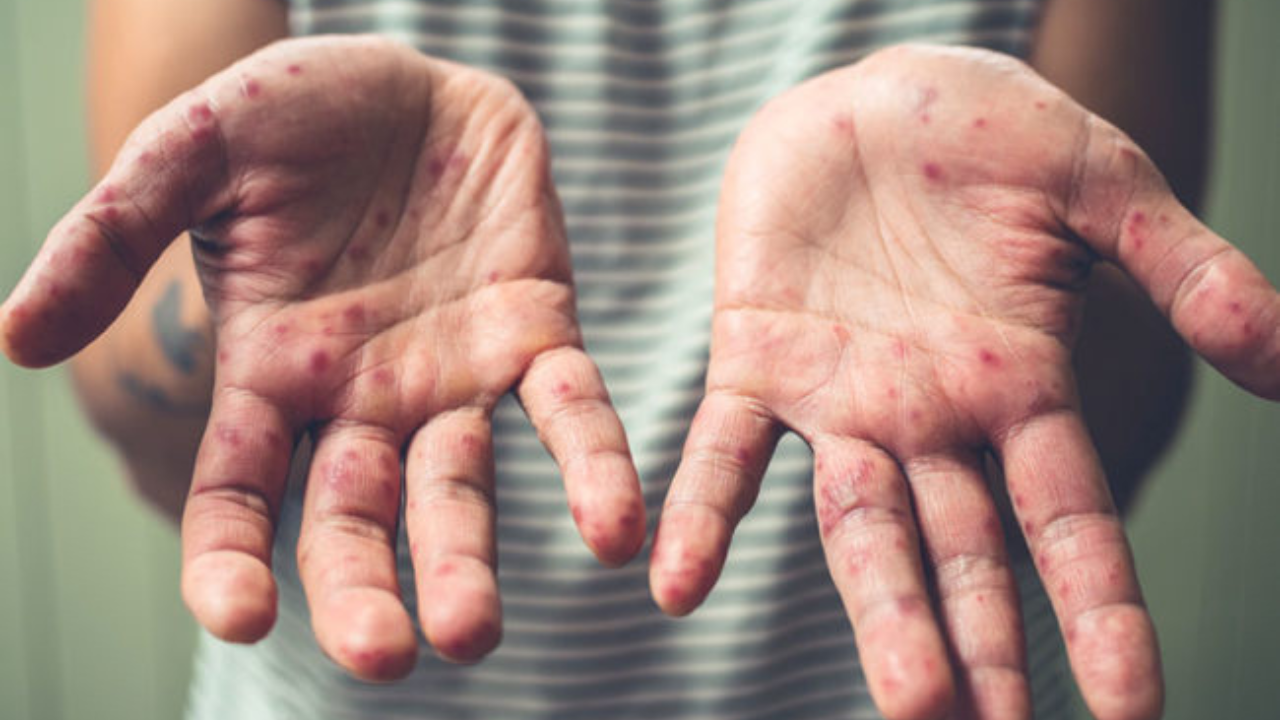While Malaysians, in general, are still taking extra precautions in protecting themselves from the COVID-19 virus, Malaysian parents have been struggling with another problem; and that’s Hands, Foot and Mouth Disease or HFMD in short.
Cases of HFMD picked up since January and have only seen an upward trend for almost 8 months. So here are a few things you need to know about HFMD, especially as a parent:
It was reported that more than 95,000 cases were detected from January until June this year, according to the Health Ministry.
Selangor claimed the top spot for most cases with almost 27.9% in the state alone, followed by a combo of Kuala Lumpur and Putrajaya at 11.2% with the remaining 60.1% from Perak, Kelantan and others.
However, 90% of total infections were among children below six years old and only 2% of the infected were children aged above 12.
Hand, foot, and mouth disease (HFMD) is a highly contagious infection caused by viruses from the Enterovirus genus, capable of spreading from one person to another through direct contact with unhygienic or contaminated surfaces, usually with the presence of faeces.
According to WebMD, it can also be transmitted through contact with a person’s saliva or respiratory secretions.
HFMD usually shows itself as blisters, sores in the mouth and rash on the feet and hands.
It’s reported that HFMD is a mild disease but that doesn’t stop it from being contagious as it can affect people of all ages, though usually infects children aged 5 and below.

One can easily get infected by HFMD through person-to-person contact, especially contact with respiratory droplets containing the virus particles of an infected person’s cough or sneeze, or contaminated surfaces. `
Touching does include the acts of hugging, kissing and sharing cups together with eating utensils. Touching contaminated surfaces like toys, knobs or other people’s body surface can also get a person infected as well.
In some rare cases, the HFMD virus can be found in recreational water so swallowing it can increase your chance of getting infected.
In the season of COVID-19 and Influenza, it’s a bit difficult to tell the difference between the symptoms as they may be similar in nature. For HFMD, the symptoms start to develop around 3 to 6 days after first getting the infection. Within that period, you or your child may experience:
a. Fever
b. Sore throat
c. Headache
d. Decreased appetite
e. Red blisters in mouth
f. Red rash on hands and feet
g. Drooling
The most painful symptoms for children may be the sores, depending on their condition. It’s imperative to get their tongue and throat checked once the fever and sore throat are present.
If your condition worsens, red rash can be seen clearly on the palms of your hands and at the bottom of your feet.
However, there are harmless at-home treatments you can try to including:
a. Eating ice cream, popsicles or sherbet
b. Drinking cold beverages
c. Avoid sodas, citrus fruits
d. Avoid spicy and salty food
Hope our list helps you understand HFMD better. If you have stories regarding your experience dealing with the disease, please write to us and send it to:
Sources: WebMD, Healthline, The Malaysian Reserve
Cases of HFMD picked up since January and have only seen an upward trend for almost 8 months. So here are a few things you need to know about HFMD, especially as a parent:
More than 95,000 cases were reported until June 2022
It was reported that more than 95,000 cases were detected from January until June this year, according to the Health Ministry. Selangor claimed the top spot for most cases with almost 27.9% in the state alone, followed by a combo of Kuala Lumpur and Putrajaya at 11.2% with the remaining 60.1% from Perak, Kelantan and others.
However, 90% of total infections were among children below six years old and only 2% of the infected were children aged above 12.
What is it, actually?

Hand, foot, and mouth disease (HFMD) is a highly contagious infection caused by viruses from the Enterovirus genus, capable of spreading from one person to another through direct contact with unhygienic or contaminated surfaces, usually with the presence of faeces.
According to WebMD, it can also be transmitted through contact with a person’s saliva or respiratory secretions.
HFMD usually shows itself as blisters, sores in the mouth and rash on the feet and hands.
It’s reported that HFMD is a mild disease but that doesn’t stop it from being contagious as it can affect people of all ages, though usually infects children aged 5 and below.
How HFMD is transmitted

One can easily get infected by HFMD through person-to-person contact, especially contact with respiratory droplets containing the virus particles of an infected person’s cough or sneeze, or contaminated surfaces. `
Touching does include the acts of hugging, kissing and sharing cups together with eating utensils. Touching contaminated surfaces like toys, knobs or other people’s body surface can also get a person infected as well.
In some rare cases, the HFMD virus can be found in recreational water so swallowing it can increase your chance of getting infected.
Symptoms to look out for

In the season of COVID-19 and Influenza, it’s a bit difficult to tell the difference between the symptoms as they may be similar in nature. For HFMD, the symptoms start to develop around 3 to 6 days after first getting the infection. Within that period, you or your child may experience:
a. Fever
b. Sore throat
c. Headache
d. Decreased appetite
e. Red blisters in mouth
f. Red rash on hands and feet
g. Drooling
The most painful symptoms for children may be the sores, depending on their condition. It’s imperative to get their tongue and throat checked once the fever and sore throat are present.
If your condition worsens, red rash can be seen clearly on the palms of your hands and at the bottom of your feet.
Treatment and home remedies
Fortunately, HFMD will subside in 7 to 10 days. But that doesn’t mean you should opt away from consulting your doctor. Your doctor may prescribe you over-the-counter ointments for the blisters and rash or ibuprofen for the headaches. If your sore throat worsens, your doctor may provide you with medicated syrups or lozenges.However, there are harmless at-home treatments you can try to including:
a. Eating ice cream, popsicles or sherbet
b. Drinking cold beverages
c. Avoid sodas, citrus fruits
d. Avoid spicy and salty food
Hope our list helps you understand HFMD better. If you have stories regarding your experience dealing with the disease, please write to us and send it to:
Sources: WebMD, Healthline, The Malaysian Reserve







